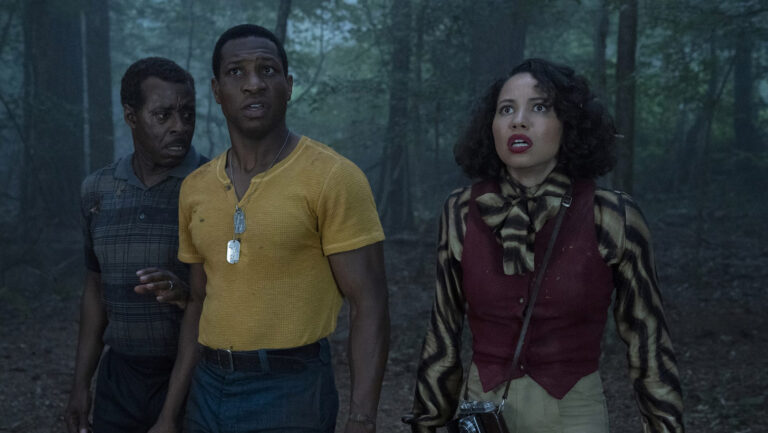Red-hot Scarlett Johannson (Ghost World, Lost in Translation) stars as Griet, a poor young country girl sent by her parents to work as a scullery maid in the household of famed painter Johannes Vermeer (Colin Firth) roundabout 1660. The pretty but prudish girl soon attracts the wandering eye of Mr. Vermeer. He chooses her, at first, as a model. Soon, however, her artistic eye and untutored intellect make her a fine candidate as Vermeer's assistant. Unfortunately, Griet's household duties and the jealous nature of the frequently pregnant Mrs. Vermeer (Essie Davis) make this arrangement difficult. Nonetheless, Vermeer secretly teaches Griet how to mix his unique paints, and soon the two are spending much quality time together.
The film looks like it's going to be one of those “forbidden love” stories. Despite the fact that Vermeer shares an obvious attraction with Griet, however, the two barely exchange a smoldering glance. Girl with a Pearl Earring is, above all, dignified and reserved. One supposes that full-on bodice ripping would be somehow declasse amid this tale of high art. On the other hand, it might have made things a bit more interesting. As envisioned by British TV director Peter Webber, Girl is a decidedly tepid affair. Unless you view Vermeer's titular portrait as “obscene”—as apparently some 17th-Century viewers might—it's hard to get very worked up over the minimal events depicted herein. On the other hand, viewed as a meeting of artistic minds—one of whom is unable by social constraints to act on her skills—Girl with a Pearl Earring ends up being a stimulating, if simplistic, examination of 17th-Century gender politics.
Johannson does a surprisingly expressive job in a role that requires her to be mostly silent and cast her eyes to the ground whenever someone approaches. Firth has the look of a hunky, misunderstood artist, but his character ends up being rather unsympathetic. Vermeer is portrayed as a debt-ridden wussy unable to stand up to his wife, patron or mother-in-law, unable to act on his feelings for his maid, unable to do much other than appreciate a well-angled beam of light. While the film aims to show us the passion behind the pigment, it ends up doing the opposite. For Vermeer, these paintings are “merely commissions” for some rich perv (greasily embodied by Tom Wilkinson). While we see Vermeer's formal appreciation for Griet in his most famous painting, we see little of the artistic lust for life portrayed in such biopics as Surviving Picasso, Pollack or, well, Lust for Life.
Webber at least captures the look and feel of a Vermeer painting with his glowingly gorgeous cinematography. Fans of classical art—which, I'm guessing, make up pretty much the entire audience of this film—will certainly appreciate these lovely compositions. Fans of moving pictures, however, may want to move someplace else.



